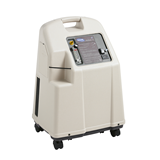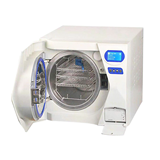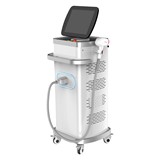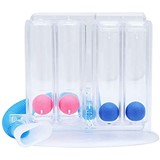Key takeaways
- Understand triggers: Recognise common causes of difficult patient behaviour to anticipate and respond effectively.
- Empower your team: Training in communication, empathy, and de-escalation improves staff confidence and patient satisfaction.
- Standardise protocols: Clear policies and escalation pathways reduce stress and ensure consistent outcomes.
- Monitor and support: Ongoing coaching, feedback, and wellbeing initiatives maintain a resilient and capable team.
- Legal and compliance considerations: Align your coaching and escalation protocols with Australian WHS and privacy laws to protect staff and your practice.
- KPIs and measurable outcomes: Track staff confidence, incident frequency, escalation efficiency, and patient satisfaction to evaluate training success.
- Staff wellbeing and resilience programs: Support your team with debriefing, counselling, stress management, and mentoring to reduce burnout and maintain performance.
- Tailored coaching for different roles: Customise training and role-play scenarios for reception and clinical staff to ensure consistent, professional handling of difficult patient interactions.
Introduction
Managing difficult patient interactions is a reality in Australian healthcare and service-based practices, from busy dental clinics to allied health and physiotherapy centres. For staff, these interactions can be stressful and impact patient satisfaction, team morale, and even compliance with workplace safety obligations.
With proper coaching, protocols, and support systems, you can equip your team to navigate challenging situations calmly and professionally. This article guides you through practical strategies, training approaches, and policy considerations tailored for the Australian context.
Understanding difficult patient interactions
- Common triggers: Long wait times, miscommunication, pain or discomfort, anxiety, or unrealistic expectations.
- Types of challenging behaviour: Aggressive, non-compliant, anxious, or manipulative patients.
- Impacts on staff: Increased stress, burnout risk, reduced confidence, and potential workplace incidents.
Australian context: Safe Work Australia reports that verbal abuse from patients is one of the most common sources of workplace stress in healthcare, with front-line staff particularly vulnerable.
Coaching and training your team
Core communication skills
- Active listening and empathy.
- Maintaining calm and neutral body language.
- Using non-confrontational language.
De-escalation techniques
- Setting clear boundaries politely but firmly.
- Acknowledging patient concerns before redirecting or offering solutions.
- Safe exits and escalation for aggressive behaviour.
Simulation and role-playing
- Practice common scenarios in a controlled environment.
- Build confidence and muscle memory in staff.
- Example: A Melbourne dental clinic ran fortnightly role-play sessions and reported a 25% reduction in reported stressful incidents over six months.
Standardised protocols and escalation pathways
- Written policies on handling difficult patients.
- Step-by-step escalation: junior staff to supervisor to management.
- Documentation requirements for complaints or incidents.
- Integration with workplace health and safety (WHS) obligations.
Tip: Ensure your protocols are visible, simple, and consistent across all staff and locations.
Staff wellbeing and support
- Debriefing: Allow team members to discuss incidents and share strategies.
- Counselling: Offer access to professional support if required.
- Peer mentoring: Pair experienced staff with newer team members for guidance.
- Recognition: Celebrate successes in managing challenging interactions.
Monitoring and continuous improvement
- Collect feedback from staff on challenging encounters.
- Track incidents and resolutions to identify patterns or training gaps.
- Adjust coaching, policies, and resources based on real-world experience.
Case study: A Sydney physiotherapy clinic implemented monthly staff reviews of difficult interactions and updated their training modules accordingly, improving patient satisfaction scores by 18% within a year.
Legal and compliance considerations
Ensuring your team can manage difficult patient interactions safely and effectively requires awareness of the legal framework in Australia. Workplace Health and Safety (WHS) obligations mean staff must be protected from verbal or physical aggression, and incidents should be documented and reported according to regulatory requirements.
Privacy laws also play a key role: any notes or records about patient behaviour must respect confidentiality and comply with the Privacy Act 1988 and relevant state legislation.
Why it matters: Aligning your coaching and escalation protocols with legal and compliance standards not only protects your staff but also safeguards your practice from potential legal or reputational risks.
KPIs and measurable outcomes
To assess whether your coaching strategies are working, track clear, actionable metrics:
- Staff confidence: Surveys or self-assessment ratings before and after training.
- Incident frequency: Number of challenging interactions or escalations reported.
- Escalation effectiveness: How efficiently incidents move through defined pathways.
- Patient satisfaction: Feedback scores, complaints, or compliments related to staff interactions.
Why it matters: Measuring outcomes ensures your training programs are delivering tangible improvements, allowing you to adjust strategies and demonstrate impact.
Staff wellbeing and resilience programs
Supporting your team’s well-being is essential for managing difficult patient interactions sustainably. Consider:
- Debriefing sessions: Allow staff to discuss challenging encounters and share strategies.
- Counselling or support services: Provide access to professional help when required.
- Stress management and mindfulness programs: Equip staff with techniques to stay calm under pressure.
- Peer mentoring: Pair experienced staff with newer team members for guidance and confidence-building.
Why it matters: Staff who feel supported and resilient are better equipped to manage challenging interactions, reducing burnout and improving patient outcomes.
Tailored coaching for different roles
Not all staff face the same types of interactions. Customising coaching ensures each team member is prepared for their specific challenges:
- Reception staff: Managing front-desk inquiries, handling frustrated patients, and setting boundaries politely.
- Clinical staff: Navigating consultations with anxious, aggressive, or non-compliant patients.
- Scripts and role-playing: Practice scenarios specific to each role to build confidence and consistency.
Why it matters: Role-specific coaching makes your team immediately operational, ensuring consistent, professional handling of difficult patient interactions across your practice.
Technology and practical tools
- CRM or patient management software to flag repeated difficult interactions.
- Appointment scheduling adjustments to reduce waiting times.
- Communication aids for patients with language or hearing barriers.
Emerging trends in Australia
- Increasing focus on mental health awareness among front-line staff.
- Integration of cultural competency in coaching to address diverse patient backgrounds.
- Using data analytics to predict high-risk periods or patients and proactively prepare staff.
Summary: Leading a capable, confident team
- Equip your staff with communication skills, empathy, and confidence.
- Implement clear policies and escalation pathways for consistency.
- Support staff wellbeing and track performance for continuous improvement.
- Use technology and data to anticipate challenges.
By embedding these strategies, your practice can manage difficult patient interactions professionally, protect your staff, and improve patient experience, aligning operational efficiency with workplace safety and Australian compliance standards.






-160x160-state_article-rel-cat.png)




















